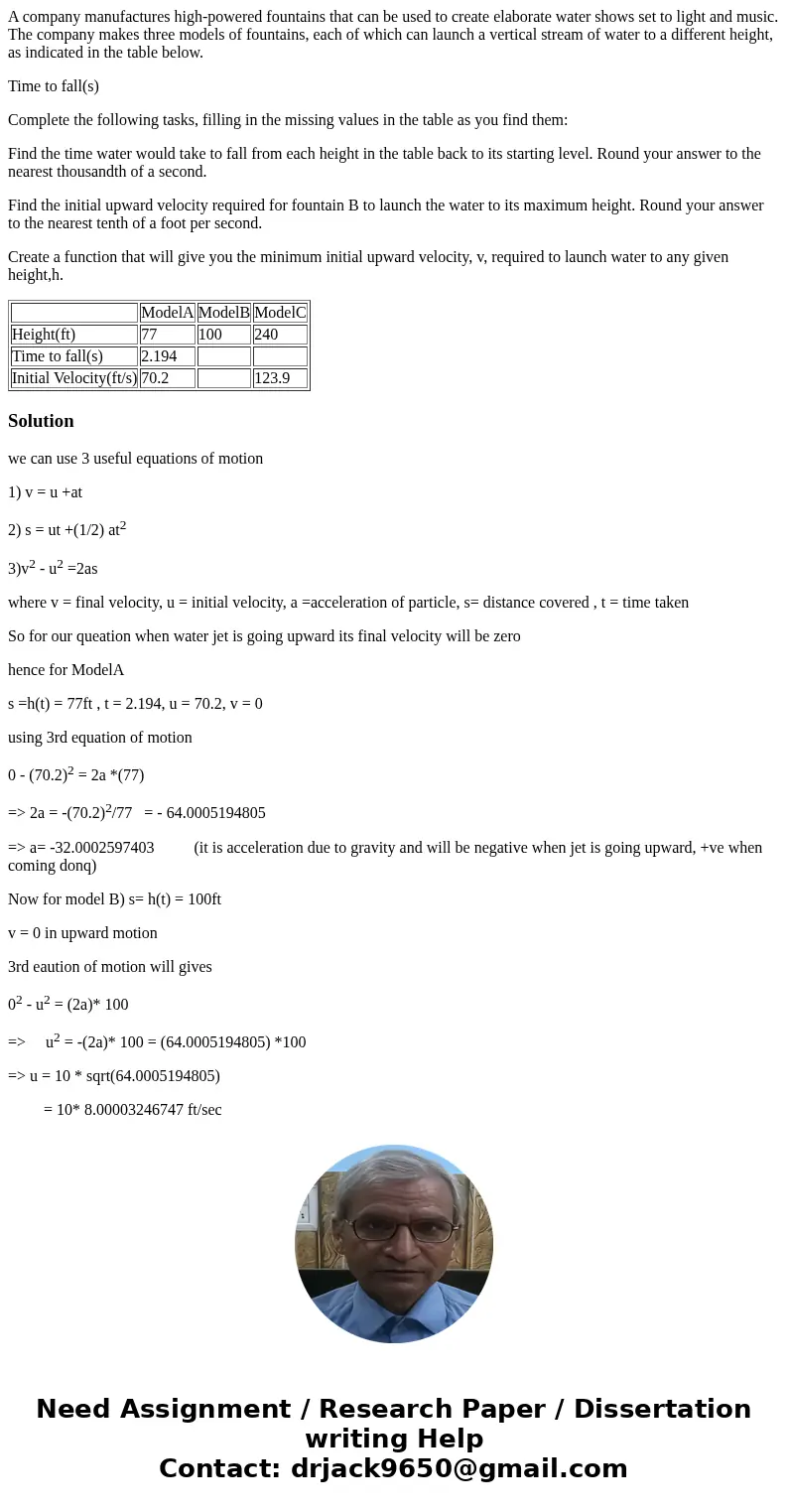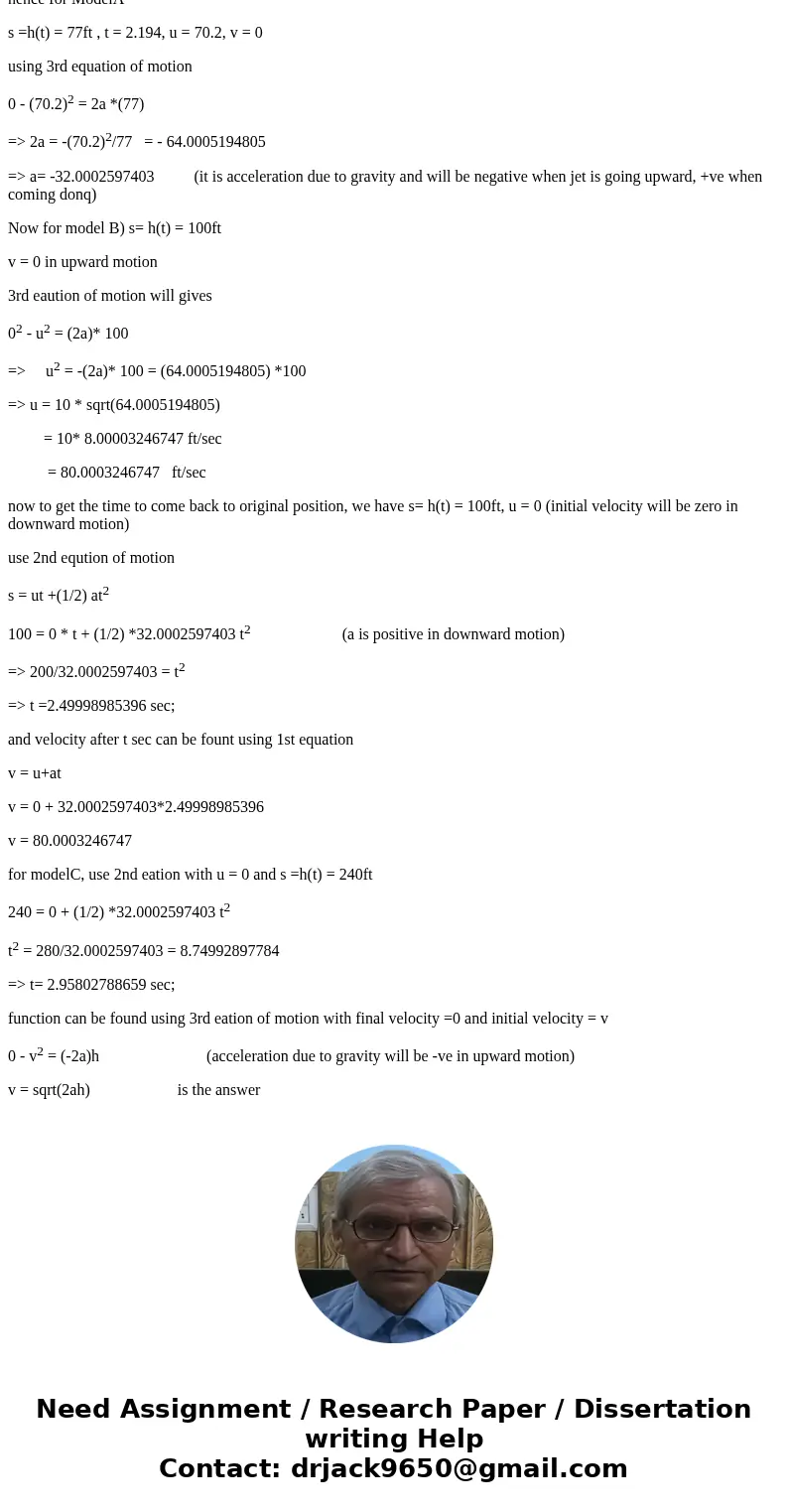A company manufactures highpowered fountains that can be use
A company manufactures high-powered fountains that can be used to create elaborate water shows set to light and music. The company makes three models of fountains, each of which can launch a vertical stream of water to a different height, as indicated in the table below.
Time to fall(s)
Complete the following tasks, filling in the missing values in the table as you find them:
Find the time water would take to fall from each height in the table back to its starting level. Round your answer to the nearest thousandth of a second.
Find the initial upward velocity required for fountain B to launch the water to its maximum height. Round your answer to the nearest tenth of a foot per second.
Create a function that will give you the minimum initial upward velocity, v, required to launch water to any given height,h.
| ModelA | ModelB | ModelC | |
| Height(ft) | 77 | 100 | 240 |
| Time to fall(s) | 2.194 | ||
| Initial Velocity(ft/s) | 70.2 | 123.9 |
Solution
we can use 3 useful equations of motion
1) v = u +at
2) s = ut +(1/2) at2
3)v2 - u2 =2as
where v = final velocity, u = initial velocity, a =acceleration of particle, s= distance covered , t = time taken
So for our queation when water jet is going upward its final velocity will be zero
hence for ModelA
s =h(t) = 77ft , t = 2.194, u = 70.2, v = 0
using 3rd equation of motion
0 - (70.2)2 = 2a *(77)
=> 2a = -(70.2)2/77 = - 64.0005194805
=> a= -32.0002597403 (it is acceleration due to gravity and will be negative when jet is going upward, +ve when coming donq)
Now for model B) s= h(t) = 100ft
v = 0 in upward motion
3rd eaution of motion will gives
02 - u2 = (2a)* 100
=> u2 = -(2a)* 100 = (64.0005194805) *100
=> u = 10 * sqrt(64.0005194805)
= 10* 8.00003246747 ft/sec
= 80.0003246747 ft/sec
now to get the time to come back to original position, we have s= h(t) = 100ft, u = 0 (initial velocity will be zero in downward motion)
use 2nd eqution of motion
s = ut +(1/2) at2
100 = 0 * t + (1/2) *32.0002597403 t2 (a is positive in downward motion)
=> 200/32.0002597403 = t2
=> t =2.49998985396 sec;
and velocity after t sec can be fount using 1st equation
v = u+at
v = 0 + 32.0002597403*2.49998985396
v = 80.0003246747
for modelC, use 2nd eation with u = 0 and s =h(t) = 240ft
240 = 0 + (1/2) *32.0002597403 t2
t2 = 280/32.0002597403 = 8.74992897784
=> t= 2.95802788659 sec;
function can be found using 3rd eation of motion with final velocity =0 and initial velocity = v
0 - v2 = (-2a)h (acceleration due to gravity will be -ve in upward motion)
v = sqrt(2ah) is the answer


 Homework Sourse
Homework Sourse